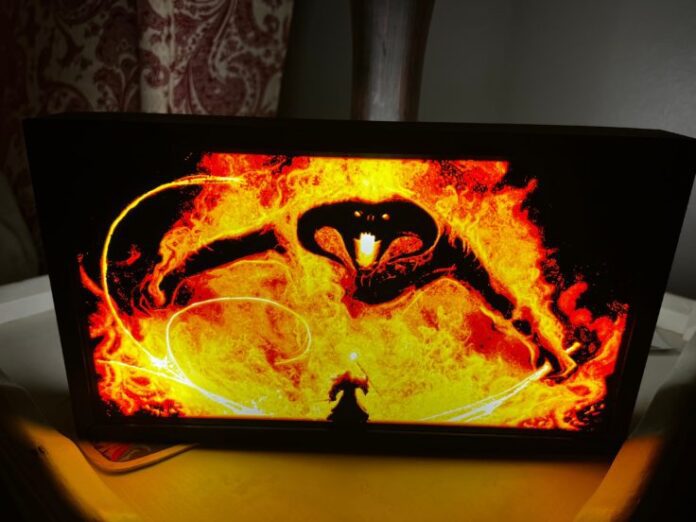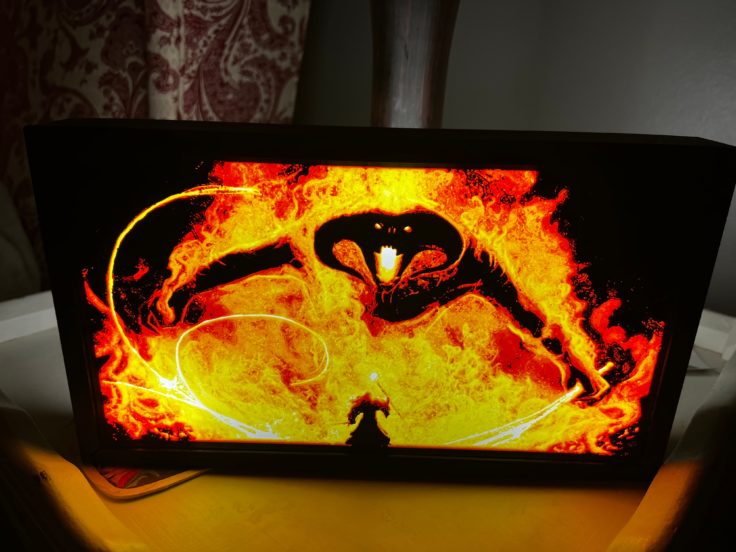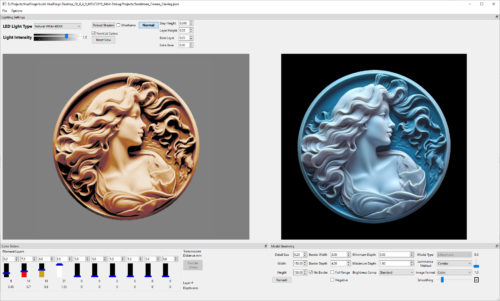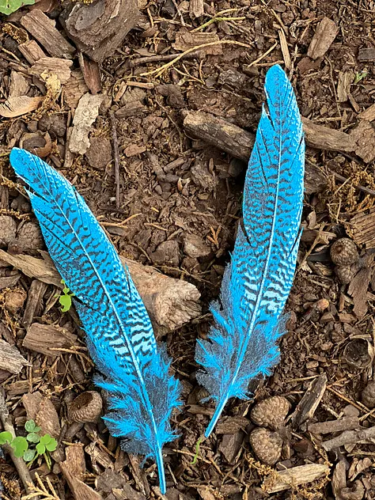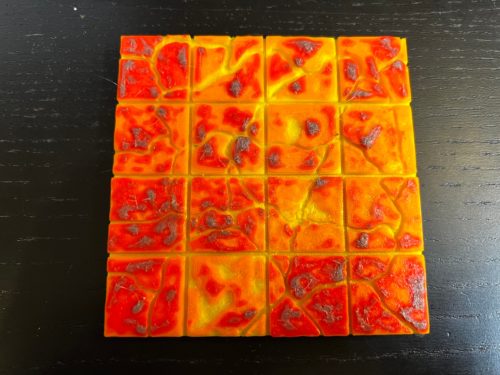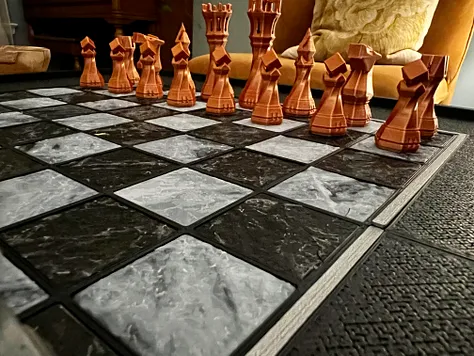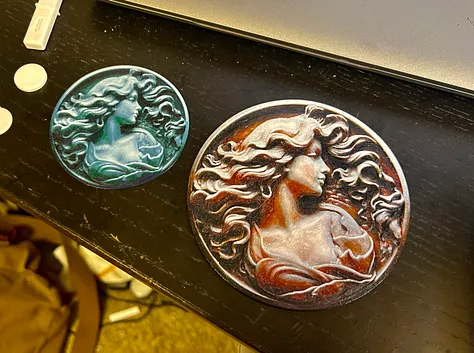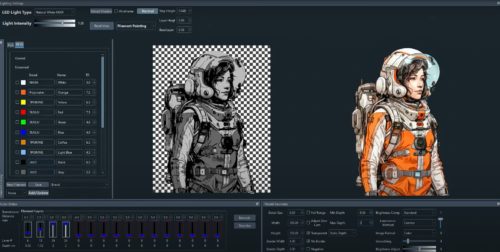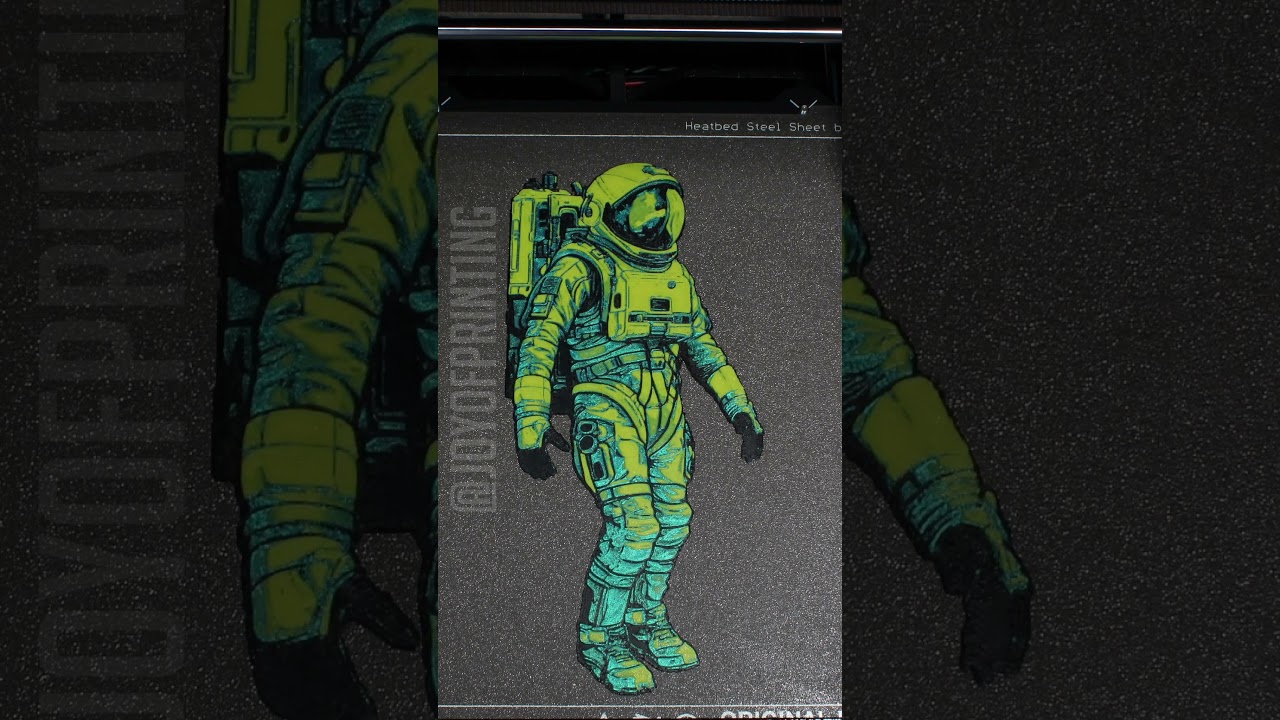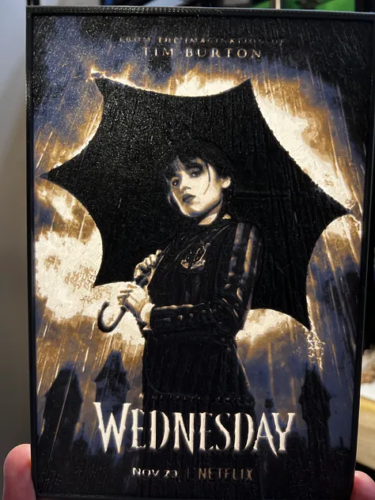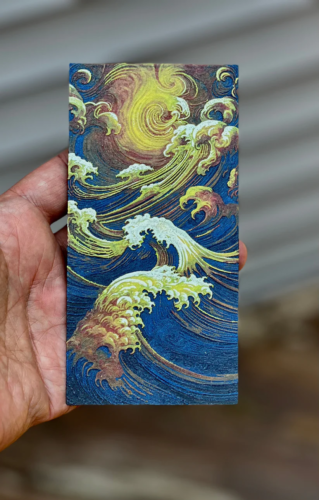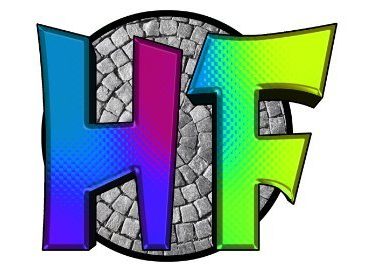A print a multicolored picture or painting with a normal 3D printer? Without automatic multicolor systems like AMS or MMU? That’s fine. And with HueForge – a new Software, which you can buy from the developer for $12 right now. Here you can find out how it all works and what is possible with it.
What is HueForge?
HueForge is a Software for Windows with multicolored images through layer-based color mixing (color space: CMYK) can create. So is a multicolored Litophane print possible? Depending on the filament, color, and light (so-called “transmission factor”), the software determines the transparency of the filament and the thickness of the respective print layer and then shows you a color prediction of the finished image.
You can then use the individual color composition based on different color parameters even per print layer change. The whole save her as STL off, send it to your printer via a slicer (without a multicolor system), and then have to change color when you change the color manually several times the filament rolls exchange. The end result often no longer looks like 3D printing, but rather like one Plastic or one painting see for yourself:
HueForge offers 3 main functions. First, the creation of classic multicolor lithophane prints based on STL files, so later you will need a light source as a backlight, secondly front-lit “reversed” lithophane, which does not need any additional lighting apart from normal ambient light; third finally existing STL files in one of the two modes (classic/reverse lithophane) to customize multicolor and with a tile look to provide.
What works with HueForge and what doesn’t?
It is important to know: You can use HueForge just plan or level 2D Images and thus do not create 3D multicolor prints. Other restrictions: It can be not all pictures problem-free convert to lithophane and it is not all colors mixable. So this is where you need to experiment.
Besides, sometimes you have to come with me Stage effects in the image that need to be minimized by fine-tuning or hidden by creating shadows. The cut-out of individual elements from images is still in development, as well as other common image editing tools. So you have to do such preparatory work elsewhere.
The software only works if you have a reasonably up-to-date version of GPU at the start. chips from NVidia and AMD as well as Intel (Iris Xe) are supported. It is important to have the support of OpenGL GLSL 4.3 or later.
How easy is HueForge to use?
Die Software in itself basically consists of three huge areas: first of a kind Filamentbibliothekin which you save your used filaments, secondly a module in which you can use several Farbregler are available, which you can “fill” with filaments from your filament library using drag&drop; third than with an as „Model Geometry“ designated section, in which you can make further settings that are not necessarily intuitive to learn. The whole thing requires a certain amount of training and, above all, experimentation.
After Saving an STL file (support for 3mf files is to follow) you will then have to do this into your slicer. A few other settings must also be made for this. So far, this has been documented for the PrusaSlicer here and for Bambu Studio here.
Speaking of Bambu Lab: There are also colored lithophane based on the CMYK color space. The whole thing is easier to use, but much more expensive: You not only need an (expensive) Bambu Lab printer including AMS (Multicolor System), but also special filament rolls in cyan, magenta, yellow and black.
How much does HueForge cost?
Die Prices for HueForge to start at a fair $25 for one Lifetime license including current updates for personal use. But it’s running at the moment Sale where you the Software for a mere $12 can dust off By the way: If you don’t want to print out any paintings, door signs would be an option, for example.
Do you have a practical test for HueForge?
We recently read about this one Tool learn it was bought today and are just about to deal with it more intensively. We want to print one of the existing STL files created with HueForge on our Bambu Lab X1C and then create something of our own. You can find out here whether and how we succeed promptly via an update.
What do you think of HueForge?
I am on the one hand fascinated by what the software is capable of doing without a special (and expensive) multicolor system. Individual 2D works of art from the 3D printer that hardly even look like 3D printing? Cool. A small selection of different works can be found, for example, on the Twitter-Account of the developer.
But after the first research, I have to say: I do doubt still in the usability of the software. Yes, it’s not finished, it still needs to be developed further, but there are quite a few parameters to set and experiment with before the desired effect is achieved. In any case, work still needs to be done on further image editing tools and availability for other operating systems so that it does not remain an absolute niche product. Nevertheless: There is undoubtedly great potential that’s why they prove impressive Pictures. What do you all mean? Already bought and tried it?
